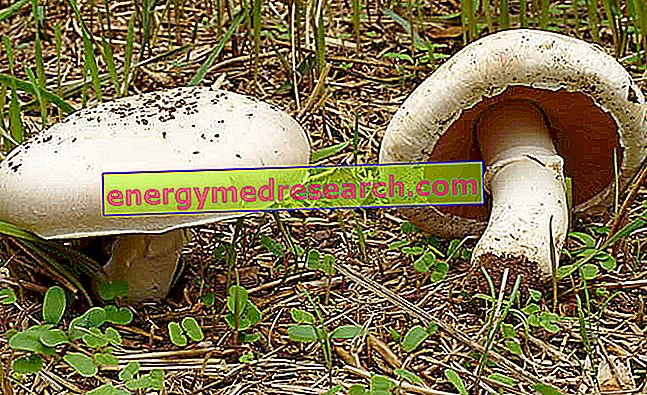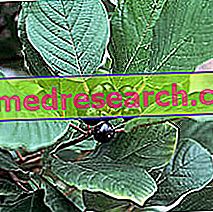What are
What are field mushrooms?
The field mushrooms are basidiomycete mushrooms that take their name from the relevance to grow spontaneously in the meadows.

Champignon mushrooms are widespread foods and are the most cultivated mushrooms in Italy. They do not belong to any of the VII fundamental food groups and have non-excellent nutritional properties. On the other hand, they have numerous applications in the kitchen and can be used raw, cooked, in appetizers, first courses, second courses and side dishes.
Belonging to the Agaricaceae family (from the Greek agarikón = campestre) and to the genus Agaricus, field mushrooms are identified in different biological species, which are divided respectively into two sections (with flesh and cuticle yellowing and with flesh and cuticle browning). The most famous champignon species are:
- A. campestris or lesser prataiolo. It is the most widespread. Its mutability has caused some forms or varieties to be disentangled, for example the squamulosus .
- A. arvensis or greater prataiolo (tending to pale yellow and has the widest stem at the base)
- A. bisporus or champignon (brown cap, fibrillose and covered with flakes with an enlarged stem at the base)
- A. bitorquis (has two separate rings in the stem).

Although it represents a rather generic term, the name "field mushrooms" means only the types of edible and good quality mushrooms. Some related species are not edible or even possess toxic properties (such as A. xanthoderma ); some apparently similar fungi (also of the genus Amanita ) have even poisonous properties.
Nutritional Properties
Nutrient features of field mushrooms
Field mushrooms are not classified in the VII basic food groups. They are not vegetables or even fruits. They bring a low amount of energy, supplied mainly by nitrogen compounds, followed by carbohydrates and marginally by lipids. Peptides have a low biological value and carbohydrates tend to be simple. The abundant fibers are predominantly insoluble; cholesterol is absent. Traces of lactose and gluten are not detected, while they may be contraindicated for those who are more sensitive to histamine. With regard to vitamins, the level of niacin (vit PP) is discreet and that of vitamin D is appreciable. As for mineral salts, the levels of zinc, potassium and phosphorus are discreet.
Field mushrooms are foods that lend themselves to most diets. They have no contraindications for the diet against overweight and metabolic diseases. In large quantities they must instead be limited by intolerant to histamine, not for the content of the latter, but rather for their ability to release it in the body.
Very high portions of raw mushrooms are also to be limited in the diet of pregnant women, for safety reasons. They are suitable for the diet of gluten and lactose intolerant. They have no contraindications in the vegetarian and vegan diet.
The average portion of field mushrooms is about 200 g (20 kcal).
| Edible part | 95% | |
| water | 90.4 g | |
| Protein | 3.7 g | |
| Lipids TOT | 0.2 g | |
| Saturated fatty acids | - g | |
| Monounsaturated fatty acids | - g | |
| Polyunsaturated fatty acids | - g | |
| Cholesterol | 0.0 mg | |
| TOT Carbohydrates | 0.8 g | |
| Starch | 0.0 g | |
| Soluble sugars | 0.8 g | |
| Dietary fiber | 2.3 g | |
| Soluble | 0.11 g | |
| Insoluble | 2.14 g | |
| Power | 20.0 kcal | |
| Sodium | 5.0 mg | |
| Potassium | 320.0 mg | |
| Iron | 0.8 mg | |
| Football | 6.0 mg | |
| Phosphorus | 100.0 mg | |
| Magnesium | 13.0 mg | |
| Zinc | 1.46 mg | |
| Copper | 0.27 mg | |
| Selenium | 7.50 µg | |
| Thiamine | 0.09 mg | |
| Riboflavin | 0.13 mg | |
| Niacin | 4.0 mg | |
| Vitamin A | 0.0 RAE | |
| C vitamin | 3.0 mg | |
| Vitamin E | - mg | |
Recipes
Culinary use of field mushrooms
Young mushrooms, still closed, can be eaten raw in salads, in which they are usually cut into strips and accompanied by rocket and parmesan. Often they make up a part of the carpaccio of salada meat or bresaola, of the cut of beef and of that of tuna.
Stir-fried with garlic and parsley, they are a typical ingredient of pasta and polenta sauce; they also represent a particularly welcome side dish. They are also widely used in risottos. There are many different preparations based on field mushrooms, such as stuffed baked ones (cap stuffed with chopped stems) and battered fried foods. Excellent also cooked on the natural grill.
The famous champignon pizza and stuffed calzone.
They can be found fresh, frozen (especially in the mixed) and in a jar in oil or in brine.
They do not lend themselves to wine pairings, which prefer above all white wines but vary according to the recipe.
Description
Field mushrooms have a thick, scaly hat. Above they are pure white, ocher, pale yellow or brown, depending on the species. The lamellae of the inferior portion are white or pinkish before opening and then they become brown chocolate, as well as the spores.
The stem is provided with a ring and can be more or less squat depending on the growth; in some species it is larger at the base.
How to recognize them
Recognize a champignon from an amanita
WARNING! We strongly advise against collecting and consuming mushrooms without having followed an adequate training course; moreover, especially at the first experiences, it is necessary to view the mushrooms collected by the competent bodies, in order to avoid suffering intoxication or poisoning.
Field mushrooms can be confused with toxic and poisonous mushrooms. In particular, it is advisable to pay close attention to Amanita ovoidae (responsible for the so-called norleucinic syndrome), proxima, strobiliformis and verdognola, which for an inexperienced eye seem to have many of the morphological and chromatic characteristics of field mushrooms. The only distinctive aspects of the field mushroom with respect to the latter and to A. xanthoderma are:
- Roselle with closed cap and brown with open cap; the ovoidae and greenish amanites are instead provided with white lamellas
- Color above the white hat, light brown or pale yellow. The greenish Amanita is instead chrome-yellow. Here the Amanita ovoidae, strobiliformis and proxima unfortunately have the same color as field mushrooms.
- Stem that does not tend to color noticeably to the touch and to the cut, while the A. xanthoderma quickly becomes yellow at the base
- Delicate scent of humus and grass. A. xanthoderma, on the other hand, has a typical acrid smell of Indian ink or phenic acid.
Note : the species A. arvensis can be easily recognized because, after having been touched with the fingers, it is stained with yellow and releases a typical anise smell.
Distribution
Where are the champignons located?
The field mushrooms are spring, summer and autumn mushrooms, with a different attitude depending on the climate and altitude that characterize the area concerned.
The field mushrooms are terrestrial and grow both in the green fertile meadows of the countryside or in the hilly and mountain pastures, and (but not all species) in the woodlands. Traditionally considered saprophytic fungi, field mushrooms (or at least some species) can form a symbiotic relationship with herbaceous or arboreal plants.



